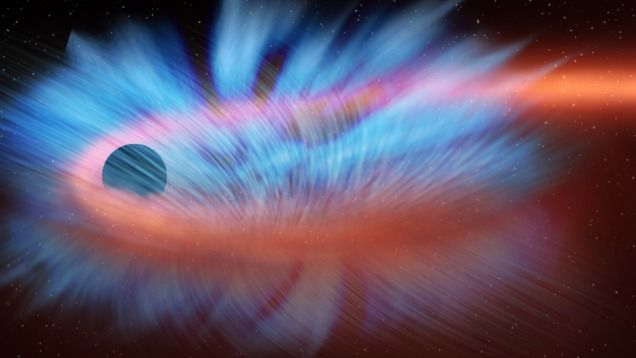When a star wanders too close to a black hole, immense gravitational forces begin to rip it apart in an epic cosmic slaying called a “tidal disruption event.” Some of the star’s mass is flung outward into space, while the rest is drawn in, triggering a powerful flare that showers the sky with x-rays.
Using NASA’s Chandra X-ray Observatory and other telescopes, a team of astronomers has now pieced together one such astronomical feasting frenzy. The event in question, appropriately named “ASASSN-14li,” was spotted near the center of PGC 043234, a galaxy that lies 290 million light years from Earth.
It’s the closest tidal disruption event we’ve discovered in a decade, and astronomers are hopeful that it’ll help us develop theories on the structure and evolution of such cosmic happenings. Findings to date, including hints of wind attempting to flee the black hole’s gravity, are detailed today in the journal Nature.
